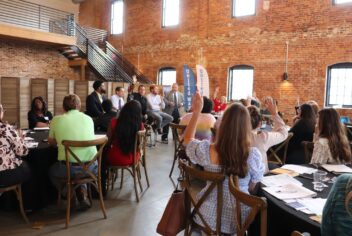There is a get-rich-quick scheme that uses homeless individuals as pawns, and it comes at the expense of nonprofit homeless shelter organizations (and their donors). If the scam isn’t stopped, these homeless shelters will cease to exist, and their residents will be back on the streets.
Multiple Challenges and Thankless Work
Homeless-serving nonprofits sometimes lease old hotels in economically distressed districts. These organizations clean up, renovate, and remodel rooms to provide them as shelter to people experiencing homelessness.
These nonprofits face multiple challenges from the beginning.
Most of these buildings are extremely old and in sad shape. Major problems can take a long time for cash-strapped nonprofits to fix, which can lead to intermittent or protracted periods of no heat, faulty electricals, and unreliable plumbing. When an antique elevator breaks down, the parts required to fix it are not always immediately available.
The landlords of these buildings don’t help — and will typically construct lease agreements to insulate them from their own inability to make the properties habitable. Given these conditions, there is no ability to control pests such as rats and cockroaches. While pest control companies are typically on retainer, this is a cyclical issue.
Beyond the property challenges, these nonprofits are tasked with housing a lot of people who were previously (or serially) unhoused — often struggling with addiction, mental illness, or other medical issues.
For tenants who find it difficult to adapt to a communal home setting, the outside life is brought inside: Some tenants are hoarders, others deface their quarters, destroy fixtures, cause water damage, or tear out wiring.
This damage contributes to vermin and other conditions that affect their neighboring tenants and can easily be demonstrated as a violation of habitability laws. Uninhabitable conditions in the hotels become objectively present, but they are almost never reported to the nonprofit.
When the nonprofit’s staff discovers damage and repairs it, they often find that as soon as they move on to repair the next room, the room they just repaired can be damaged all over again.
In many jurisdictions, it is notoriously difficult to evict for the greater good of the collective those tenants who cause habitability challenges.
These nonprofits do the best they can with the resources they have, but upkeep, compounded by tenant-client behavior, means they often must prioritize repairs over permanent improvements.
It can be thankless work, but these lean nonprofits do their best to keep people off the streets. They never imagined they would be the ones preyed upon by predatory plaintiff attorneys, suing them for substandard living conditions.
The Scheme
Plaintiff lawyers have found the opportunity to earn a living by “advocating” for these tenants.
The lawsuits are typically presented as multi-plaintiff suits because there are many tenants who suffer from the actions of those tenants that create the substandard living conditions.
For a plaintiff attorney, it’s easy: All they need are a couple of photos of the damaged rooms, which can then be used as “evidence” to demand a financial settlement from the nonprofit, threatening them with a habitability lawsuit if they don’t pay up.
The nonprofit is then put between a rock and hard place: They can settle and pay out more money than they can afford, or they can try to fight the accusations in court, where they risk a jury being manipulated into forcing the nonprofit to pay an even larger sum.
Either way, the plaintiff attorney wins — pocketing up to half of any judgement or settlement that is offered, with the rest going to the tenants.
Juries have been known to award the tenants (and their attorneys) damages that are multiple times the sum that was originally demanded from the nonprofit — overlooking any facts or the nuance of the situation.
As a result, it’s often less risky (and less expensive) for nonprofits to settle these suits rather than risk fighting them in court.
Law firms find these types of suits easy pickings. The plaintiff attorneys continue to file suits because they’re profitable. Some have been known to recycle the exact same court filings and just change the names on them.
Is recycling filings fraud? Probably not. But if you’re a lawyer in California, it’s against the rules of ethics to mislead the court. And that’s exactly what seems to be going on in many, if not most, of these cases.
Nonprofits tasked with providing housing don’t have the resources or control to ensure that the clients they serve aren’t themselves creating unhabitable living conditions — and when lawyers representing the residents extract even more resources, it becomes even harder for those nonprofits to deliver on their mission.
There may even be residents who intentionally inflict damage and then work with lawyers to sue over it, but that is not really a necessary component of this dynamic. If you take an old apartment building and do enough digging, you’re going to find something wrong with it.
The Fallout
There is scant evidence that these suits help or change the living conditions for the tenants involved. There don’t seem to be any long-term studies that indicate the former residents’ lives changed for the better after payouts in these cases.
Some tenants bounce from shelter to shelter, and purposely damage rooms. Some plaintiff attorneys may even be in league with this: Taking out advertisements — bus ads, bench ads, billboards, etc. — for these types of suits. Some have been known to set up shop on sidewalks outside these shelters to sign up clients.
Rarely do they worry about the details or tune up their recycled complaints to include only those who were living there during the effective period. They take advantage of these laws, bring multi-plaintiff cases, garner fees, and move on to the next.
If an attorney wants to streamline the process, it can be as easy as filling in the blanks.
But even when cutting corners, they still allege that the claims required hundreds of hours in attorney fees, driving the cost for the nonprofit to settle even higher.
The “rinse and repeat” nature of this scheme, and the settlements involved, have crippled some nonprofit homeless shelters. Some have had to close. This does nothing to help the homeless problem.
Homeless Shelters Could Cease to Exist
The actions of these plaintiff attorneys have threatened the overall insurability of all nonprofit homeless shelters.
If these shelters can’t get insurance, they’ll be forced to close their doors, and the tenants who are following the rules will be back out on the streets.
What Can Be Done
As a nonprofit that insures other nonprofits, NIA is an outlier in the insurance industry — the motivation is not profit, but community good.
When unethical plaintiff attorneys zero in on one type of nonprofit, repeated claims negatively affect insurance rates— which wastes donor and government funds and other essential resources that should be used for critical services in our communities.
Reduced coverage limits
One way NIA hopes to address this type of scheme is to make the nonprofit homeless shelters a less-appealing target by reducing the limits of coverage available for opportunistic tenants and attorneys to pursue.
The idea is, if the nonprofit’s insurance coverage maxes out at a certain dollar amount, the potential payout will not be considered worth the effort for an attorney to attempt to shake the nonprofit down over.
Legislative solution
Loopholes in the legal system are what created this landscape.
This entire situation is the bad result of a good intention. It is laudable for all of us to want to make sure that affordable housing meets the needs of the formerly homeless. Nonprofits do their best with the limited funds we, as a society, determine we can afford to give. That is not enough to fix up these buildings in ways that would help them meet the higher standards expected. Instead of helping to solve this problem, these plaintiff attorney actions have just created a lucrative cottage industry for themselves. And frankly, this is a problem in those jurisdictions that allow it to be a problem.
A legislative solution to close those loopholes could be another solution, but it is unclear if the political will to do this exists. It is hard to get sensible legislation out of the judiciary committee of an elected body if it impacts the potential earnings of trial lawyers.
Conclusion
Because some opportunistic plaintiff attorneys have found an easy way to make a quick buck, the existence of some nonprofit shelters is now in jeopardy.
No matter how well this article explains the scam, the plaintiff attorneys involved will dismiss everything above through a seasoned playbook of rhetoric, bad-faith arguments, and false dilemmas. These are the very same tools they use to manipulate juries to feel outrage, sympathy, and anger — to circumvent science, logic, facts, and common sense.
“We’re trying to help the homeless! Why are you against helping homeless people?”
When homeless shelters are permanently closed because they can’t get insurance from any insurer, and there’s more people sleeping on the streets of your city than ever, these plaintiff attorneys will be sleeping soundly in luxury beds and linens, dreaming of new ways to steal money from the next type of nonprofit that your community relies upon.





